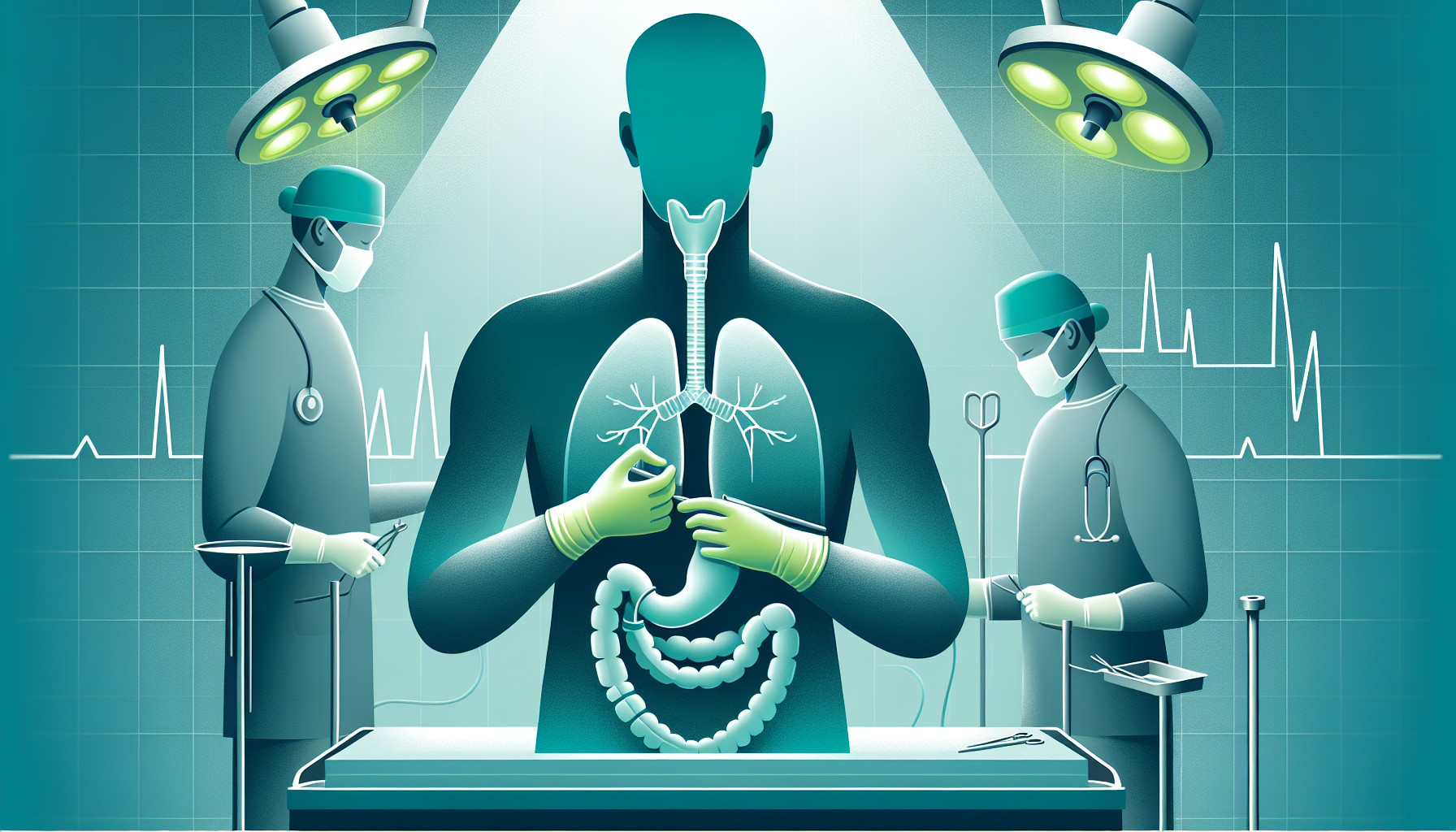Our Summary
This research paper talks about a successful treatment of a sick ostrich that was kept in captivity. The ostrich was feeling unwell for about two weeks and had a lump in the upper part of its neck. When the vets examined it, they found a hole in the middle part of the ostrich’s food pipe, from which food was leaking. This hole was surrounded by dead tissue. The vets also found a narrowing in the food pipe, which was causing food to pile up in front of it.
After two days of care, the ostrich felt better, which allowed the vets to perform a surgery. They removed the problematic part of the food pipe and stitched the healthy ends together.
After the surgery, the ostrich was not allowed to eat for 24 hours. Then, for 15 days, it was given a special formula, made from commercially available ostrich food, through a feeding tube. The vets confirmed that the surgery site was healing properly 17 days after the surgery, using a flexible tube with a camera on the end to look inside the ostrich’s food pipe.
The ostrich was allowed to go home after 27 days, and no problems were noticed in the 180 days after the surgery. The vets concluded that this type of surgery, along with the care given before and after it, was effective in treating this kind of problem in a captive ostrich.
FAQs
- What is a partial esophagectomy and how was it performed on the ostrich?
- How was the healing of the surgical site in the ostrich confirmed after the esophagectomy?
- What pre- and postoperative management was provided to the ostrich following the esophagectomy?
Doctor’s Tip
A helpful tip a doctor might tell a patient about esophagectomy is to follow postoperative care instructions closely, including dietary restrictions and wound care, to ensure proper healing and recovery. It is important to communicate any concerns or symptoms to your healthcare provider promptly.
Suitable For
Esophagectomy is typically recommended for patients with esophageal cancer, severe esophageal strictures, Barrett’s esophagus with high-grade dysplasia, or refractory benign esophageal strictures that do not respond to other treatments such as dilation or stenting. In the case of the ostrich described in the abstract, esophagectomy was performed to treat a fistulated esophageal stricture.
Timeline
Before esophagectomy:
- Patient presents with lethargy and mass effect in the proximal cervical region
- Physical examination reveals a fistula in the middle cervical esophagus surrounded by devitalized and necrotic tissue
- Feed material is found leaking from the site
- Cervical radiography identifies an esophageal stricture with anterior dilation due to the accumulation of feed
After esophagectomy:
- Patient receives supportive care for 48 hours to stabilize overall status
- Partial esophagectomy and resection of affected tissues with end-to-end anastomosis is performed
- Postoperative management includes fasting for 24 hours, followed by administration of liquid hand-rearing formula via feeding tube for 15 days
- Proper healing of surgical site confirmed by esophagoscopy using a flexible endoscope 17 days after surgery
- Patient discharged after 27 days with no complications recorded within the 180-day follow-up period.
What to Ask Your Doctor
- Why is an esophagectomy necessary in my case?
- What are the risks and potential complications associated with esophagectomy?
- What is the expected outcome and recovery time following the surgery?
- Will I need any additional treatments or therapies after the esophagectomy?
- How should I prepare for the surgery, and what should I expect during the recovery process?
- Are there any dietary or lifestyle changes I should make post-surgery?
- How frequently will I need follow-up appointments and monitoring after the esophagectomy?
- Are there any long-term effects or considerations I should be aware of following the procedure?
- Are there alternative treatment options to consider before proceeding with an esophagectomy?
- How experienced is the surgical team in performing esophagectomies, particularly in cases like mine?
Reference
Authors: Zafalon-Silva B, Costa PM, Schmidt VRQ, C Beck CA, Alievi MM. Journal: J Avian Med Surg. 2023 Mar;36(4):421-425. doi: 10.1647/21-00043. PMID: 36935215
